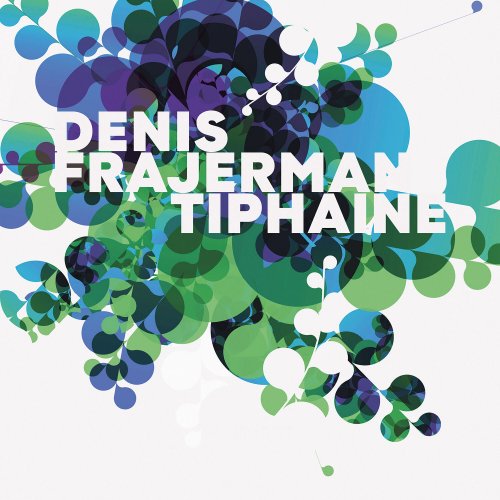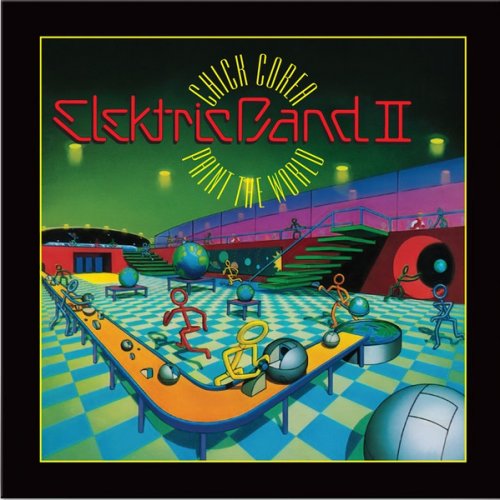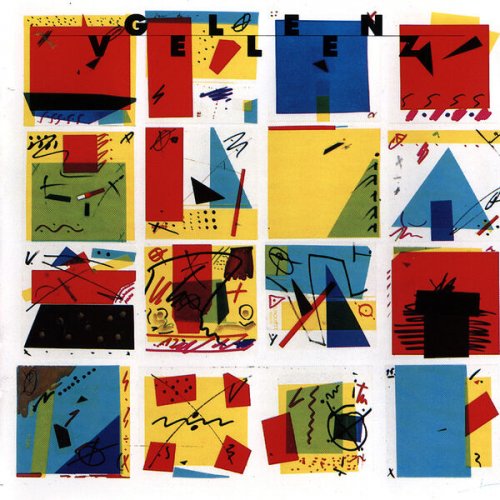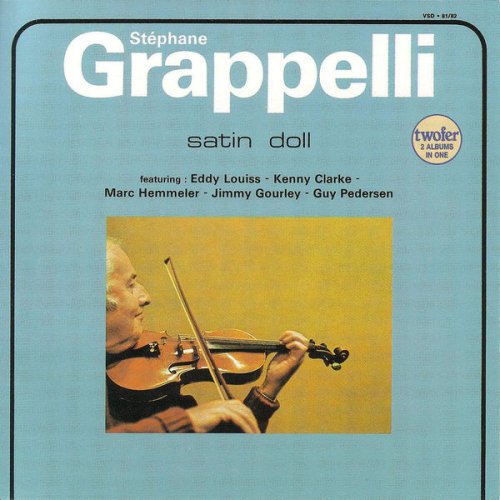Denis Frajerman - Thiphaine (2022) Hi-Res

Artist: Denis Frajerman
Title: Thiphaine
Year Of Release: 2022
Label: Atypeek Music
Genre: Contemporary Classical
Quality: FLAC (tracks) / FLAC 24 Bit (44,1 KHz / tracks)
Total Time: 31:52 min
Total Size: 203 / 363 MB
WebSite: Album Preview
Tracklist:Title: Thiphaine
Year Of Release: 2022
Label: Atypeek Music
Genre: Contemporary Classical
Quality: FLAC (tracks) / FLAC 24 Bit (44,1 KHz / tracks)
Total Time: 31:52 min
Total Size: 203 / 363 MB
WebSite: Album Preview
1. Sur ses ailes
2. Les vagues à venir
3. Dans l'air absent
4. Il y a des lèvres et des yeux
5. Au rythme d'un vent
6. Les dimanches glissants
7. Sous ses ailes
With his new album, the composer Denis Frajerman gave his wife Tiphaine, who has already performed as a vocalist in his productions, a special present for her fiftieth birthday. The former Palo Alto musician is just as happy for his hopefully growing audience, because despite its personal character, “Tiphaine” reveals a lot that is already described here as a “panorama between chamber music [...] and cinematic, slightly oriental music”. Traces of a surreal seeming eccentricity was celebrated.
“Tiphaine” reveals a subtle, multi-layered mixture of moods that seeks its place somewhere in the wide field between tension and a certain melancholy and is never really ready to be pinned down in a very appealing way. The collection is framed by the high-pitched Sur les Ailes, whose melodramatic violin parts emphasize a solemn seriousness. But this prelude also has a certain shrillness that doesn't make the whole thing seem too aesthetic, and at some point a stirring drama comes into the picture anyway, which rejects any overly peaceful contemplation.
This slightly episodic element, which keeps changing tempo, instrumentation and mood within the individual pieces, is another characteristic of the music. Thus “Les Vagues à Venir”, which begins with a flourish and exotic rattles underlaid with bass, varies between (post-)punk world music and an imaginary film score thanks to melancholic and slightly orientalizing string parts whose wistfulness miraculously gets along with a hypnotic groove. The alternation between the dark pathos of low-pitched cello parts, stirring dissolution of boundaries and the ornaments of a lamenting violin makes “Dans L'Air Absent” an interesting narrative, to which is added the brief interlude “Il y a des lèvres et des yeux”, in which the rapid succession Tones rush forward with almost orchestral force.
Moments of great tension occur again and again, in which people like to reach for the treasure list of cinematic and theatrical forms. With its expressive violins, rattles and throbbing percussion, “Au rythme d’un vent” is almost reminiscent of a euro western with a Morricone soundtrack, with a slight hint of Eastern Europe. The tension also lives very strongly from the fact that nothing is as monotonous in the repetitive patterns as it seems at first glance and that there is always room for small irregularities. That's why you don't get "caught cold" when at some point another, completely different rhythm pushes behind the picture and initiates a change of scenery.
A final highlight before the album cyclically ends with a shorter version of “Sur ses Ailes” is “Les dimanches glissants”, which begins as a courtly dance from an unknown tradition and gradually leads into a narrative in which all the melancholic , exciting, exoticizing, stirring moments that make “Tiphaine” come back to the stage to bow properly. (US)
“Tiphaine” reveals a subtle, multi-layered mixture of moods that seeks its place somewhere in the wide field between tension and a certain melancholy and is never really ready to be pinned down in a very appealing way. The collection is framed by the high-pitched Sur les Ailes, whose melodramatic violin parts emphasize a solemn seriousness. But this prelude also has a certain shrillness that doesn't make the whole thing seem too aesthetic, and at some point a stirring drama comes into the picture anyway, which rejects any overly peaceful contemplation.
This slightly episodic element, which keeps changing tempo, instrumentation and mood within the individual pieces, is another characteristic of the music. Thus “Les Vagues à Venir”, which begins with a flourish and exotic rattles underlaid with bass, varies between (post-)punk world music and an imaginary film score thanks to melancholic and slightly orientalizing string parts whose wistfulness miraculously gets along with a hypnotic groove. The alternation between the dark pathos of low-pitched cello parts, stirring dissolution of boundaries and the ornaments of a lamenting violin makes “Dans L'Air Absent” an interesting narrative, to which is added the brief interlude “Il y a des lèvres et des yeux”, in which the rapid succession Tones rush forward with almost orchestral force.
Moments of great tension occur again and again, in which people like to reach for the treasure list of cinematic and theatrical forms. With its expressive violins, rattles and throbbing percussion, “Au rythme d’un vent” is almost reminiscent of a euro western with a Morricone soundtrack, with a slight hint of Eastern Europe. The tension also lives very strongly from the fact that nothing is as monotonous in the repetitive patterns as it seems at first glance and that there is always room for small irregularities. That's why you don't get "caught cold" when at some point another, completely different rhythm pushes behind the picture and initiates a change of scenery.
A final highlight before the album cyclically ends with a shorter version of “Sur ses Ailes” is “Les dimanches glissants”, which begins as a courtly dance from an unknown tradition and gradually leads into a narrative in which all the melancholic , exciting, exoticizing, stirring moments that make “Tiphaine” come back to the stage to bow properly. (US)








